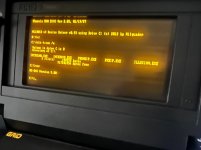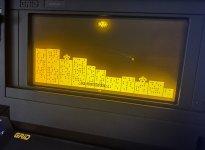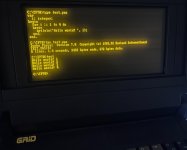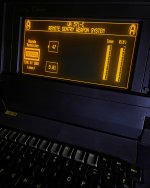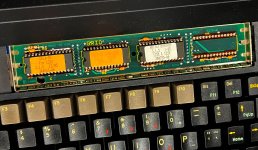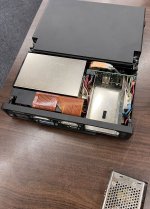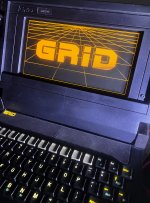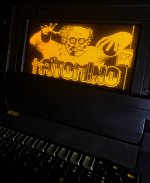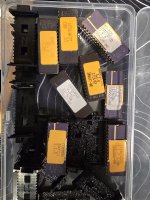voidstar78
Veteran Member
Big thanks to @0xDEADBEEF I found that I was able to boot my GRiD system to MS-DOS 5.0 (on a 720K 3.5). I just did a DISKCOPY B: B: of my original MS-DOS 5.0 boot disk (since for some reason SYS B: didn't work, so I just used Microsoft own DISKCOPY to clone the disk). Then when the GRiD system boots, mash "F" to boot from floppy disk.
Then I verified the SDDRV.SYS works when the SDLPT device is attached off the parallel port, effectively giving me a 2GB hard drive for this system (very slow access, but gives space to work with beyond a single 720KB floppy disk).
Then I verified QBASIC GORILLA.BAS example works! And I can use TPC.EXE to compile Turbo Pascal 7 PAS files (right from the SD-LPT device). The Borland Pascal 7.0 TURBO.EXE "IDE" is very slow, you can "feel" the syntax highlighting kicking in (or it's trying to cache to the file system a lot, and across LPT that's just too slow). I tried to disable all that, but their editor was still painfully slow (pretty sure this is a 4.77MHz system). So just use QBASIC.EXE editor (or EDLIN, or COPY CON if really have to), then compile with TPC from command line.
I still don't know much about the GRiD-OS stuff, but glad I can still program the system using other means.
Then I verified the SDDRV.SYS works when the SDLPT device is attached off the parallel port, effectively giving me a 2GB hard drive for this system (very slow access, but gives space to work with beyond a single 720KB floppy disk).
Then I verified QBASIC GORILLA.BAS example works! And I can use TPC.EXE to compile Turbo Pascal 7 PAS files (right from the SD-LPT device). The Borland Pascal 7.0 TURBO.EXE "IDE" is very slow, you can "feel" the syntax highlighting kicking in (or it's trying to cache to the file system a lot, and across LPT that's just too slow). I tried to disable all that, but their editor was still painfully slow (pretty sure this is a 4.77MHz system). So just use QBASIC.EXE editor (or EDLIN, or COPY CON if really have to), then compile with TPC from command line.
I still don't know much about the GRiD-OS stuff, but glad I can still program the system using other means.

